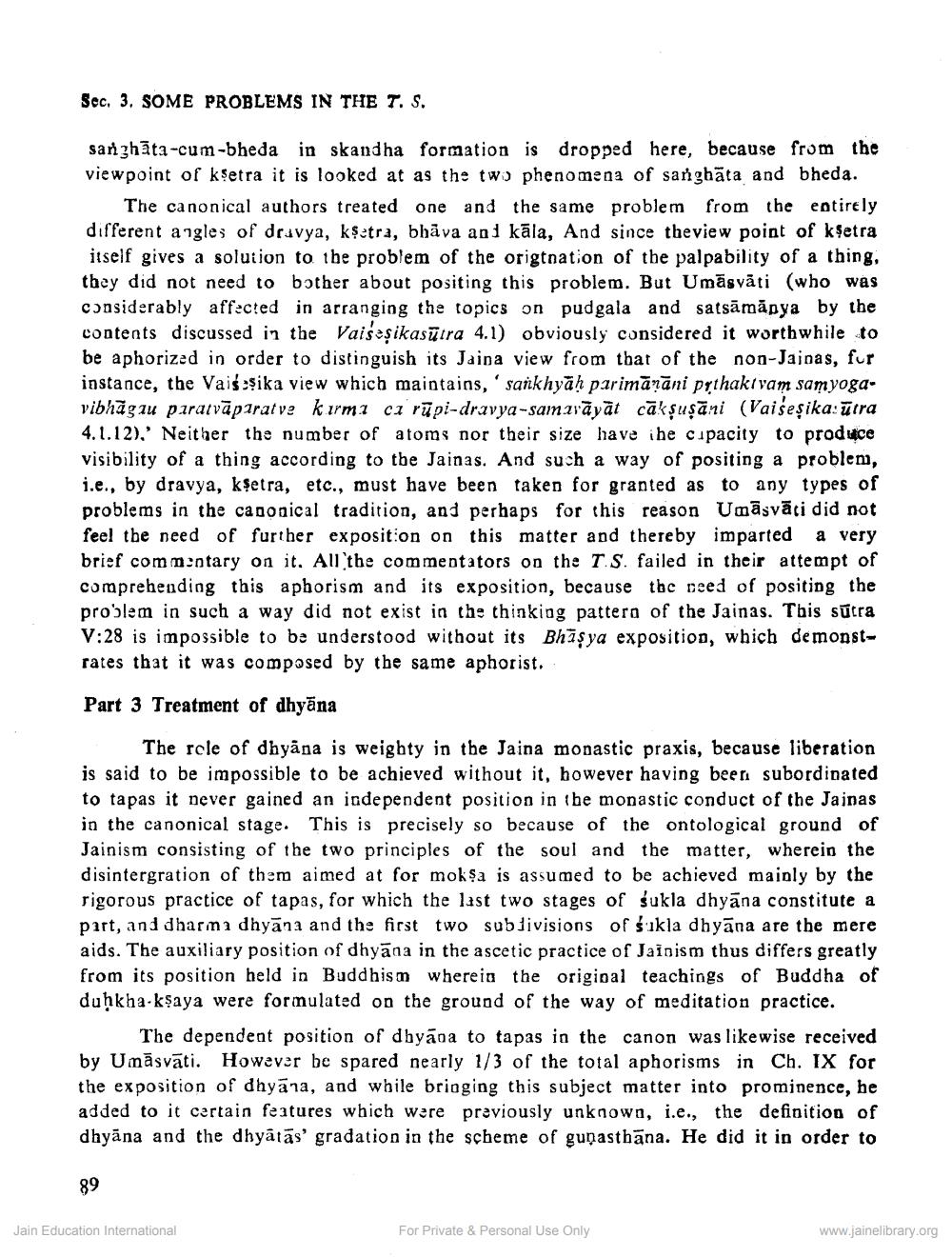________________
Sec. 3. SOME PROBLEMS IN THE T. S.
sanghāta-cum-bheda in skandha formation is dropped here, because from the viewpoint of ksetra it is looked at as the two phenomena of sanghāta and bheda.
The canonical authors treated one and the same problem from the entirely different angles of dravya, kşetra, bhāva and kāla, And since theview point of kSetra
itself gives a solution to the problem of the origtnation of the palpability of a thing, they did not need to bother about positing this problem. But Umāsvāti (who was considerably affected in arranging the topics on pudgala and satsāmăpya by the contents discussed in the Vaisaşikasūtra 4.1) obviously considered it worthwhile to be aphorized in order to distinguish its Jaina view from that of the non-Jajoas, fur instance, the Vaiszsika view which maintains,' sankhyāḥ parimārāni pythakívam samyogavibhāgiu paratvāparat ve kırmı ci rūpi-dravya-samavāyāt cākşuşāni (Vaiseșika:ūtra 4.1.12),' Neither the number of atoms nor their size have ihe capacity to produce visibility of a thing according to tbe Jainas. And such a way of positing a problem, i.e., by dravya, kşetra, etc., must have been taken for granted as to any types of problems in the canonical tradition, and perhaps for this reason Umāsvāci did not feel the need of further exposition on this matter and thereby imparted a very brief commentary on it. All the commentators on the T.S. failed in their attempt of comprehending this aphorism and its exposition, because the ceed of positing the problem in such a way did not exist in the thinking pattern of the Jainas. This sutra V:28 is impossible to be understood without its Bhāşya exposition, which demonstrates that it was composed by the same aphorist.
Part 3 Treatment of dhyāna
The role of dhyana is weighty in the Jaina monastic praxis, because liberation is said to be impossible to be achieved without it, however having been subordinated to tapas it never gained an independent position in ihe monastic conduct of the Jainas in the canonical stage. This is precisely so because of the ontological ground of Jainism consisting of the two principles of the soul and the matter, wherein the disintergration of them aimed at for moksa is assumed to be achieved mainly by the rigorous practice of tapas, for which the last two stages of śukla dhyāna constitute a part, and dharma dhyāna and the first two subdivisions of śıkla dhyāna are the mere aids. The auxiliary position of dhyāna in the ascetic practice of Jainism thus differs greatly from its position held in Buddhism wherein the origioal teachings of Buddha of duḥkha-kşaya were formulated on the ground of the way of meditation practice.
The dependent position of dhyāna to tapas in the canon was likewise received by Umāsvāti. However be spared nearly 1/3 of the total aphorisms in Ch. IX for the exposition of dhyāna, and while brioging this subject matter into prominence, he added to it certain features which were previously unknown, i.e., the definition of dhyāna and the dhyātās' gradation in the scheme of guņasthāna. He did it in order to
89
Jain Education International
For Private & Personal Use Only
www.jainelibrary.org




